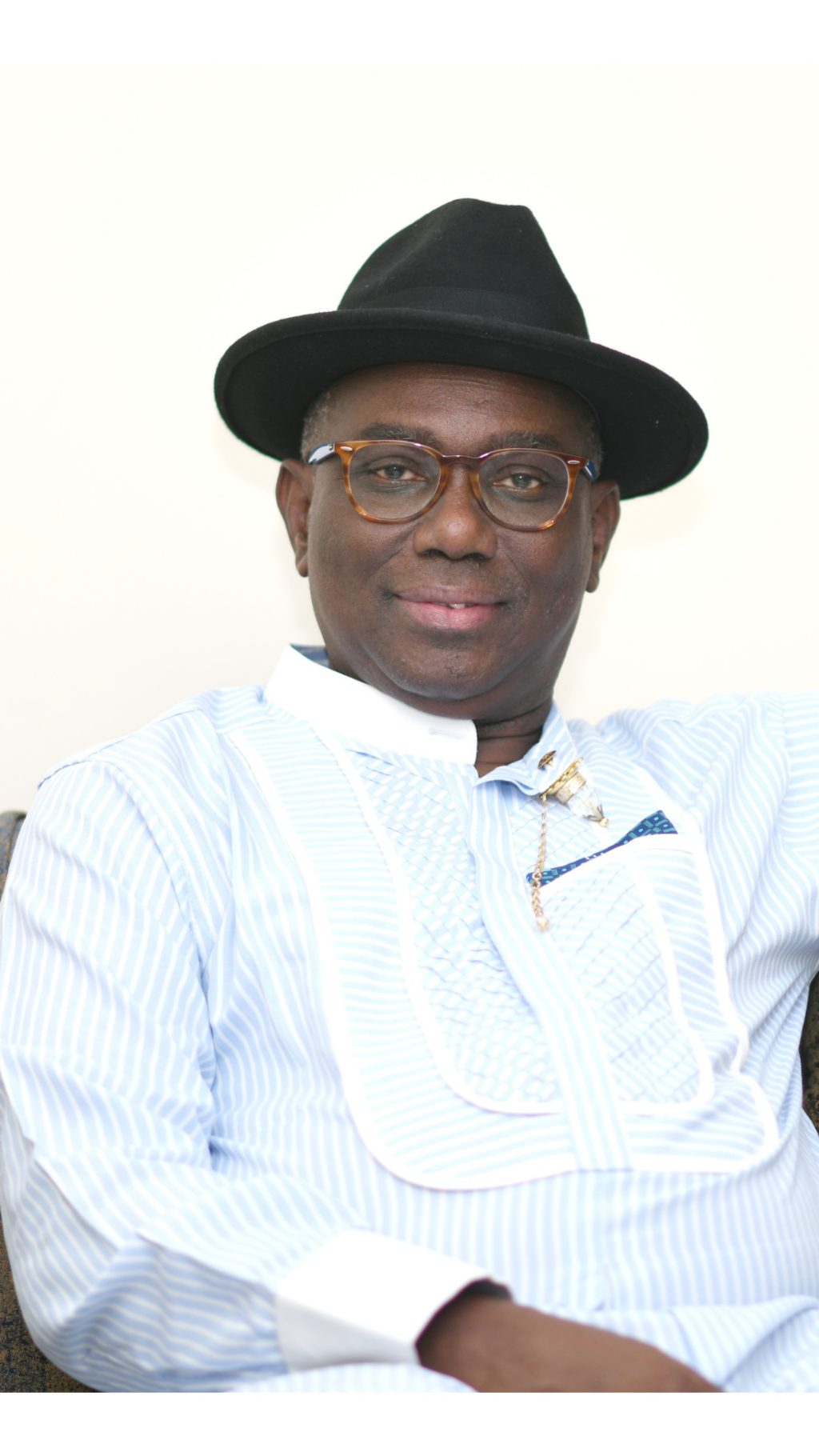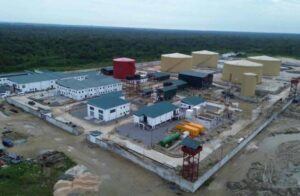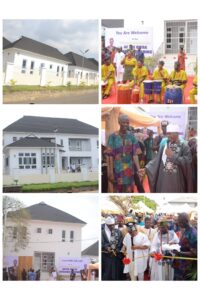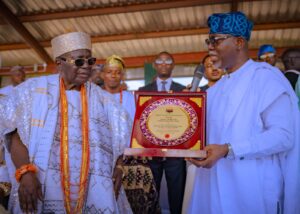
OTAKIKPO CRUDE OIL TERMINAL DESIGNED TO SOLVE CHALLENGES IN NIGERIA’S OIL AND GAS INDUSTRY – ADEGBULUGBE
“…The whole idea is a project whose time has come”
…As Chairman, Green Energy Int’l Ltd features on Arise Television Current Affairs Programme
The Chairman of Green Energy International Limited, Prof. Anthony Adegbulugbe has said that the first indigenous onshore oil terminal built by the company would play significant roles in the oil and gas industry in Nigeria.
The Chief Executive Officer who featured on a current affairs programme on Arise Television emphasized that the idea of the Otakikpo Terminal is a project whose time has come.
He stated that the terminal is a product of two-year investment after 50 years of relying on the ones put in place by foreigners.
In his words, “the whole idea is a project whose time has come. Because, right now, we have an ageing network of export infrastructure that has been a limiting factor to the production of oil in Nigeria”.
“We have put in place a modular facility of 750,000 barrels storage capacity that is expandable to 3,000,000 barrels and we are working with relevant stakeholders to keep recording successes”, Prof. Adegbulugbe stated.
The Ondo-born entrepreneur said the onshore crude oil terminal was designed to solve challenges faced by players in the Industry.
Adegbulugbe stated that the record facility is out to cater for four set of Investors.
In his words, “the Otakikpo terminal which is the newest is catering for four sets of of E and P companies. The first set are those who have small reserves far away from oil export infrastructure pipeline and they can’t afford to build a pipeline because of the small reserves”.
“This time around, they have a solution through trucking option. That is, they can truck 1,000-1,500 barrels into our terminal. Getting to the terminal, we have very good road network. So, if you are around 50 kilometres or thereabouts, you can come to Otakikpo terminal”.
“Then, another set of companies have fields around creeks where they can’t do any trucking but they can do barging. Again, we cater for those in that category. They can barge or even aggregate and come to where we call kilometre 6 because we already have a pipeline from our field to 6 kilometers offshore and it is a bi-directional, which we are using right now for our export as we can turn it around”.
“You can bring your barge to kilometer 6, pump your oil onshore and from onshore it goes directly into our terminal. So that again gives succour to those fields and there are so many of them”.
“The third set of Investors are those who have fields 20 kilometers offshore. One of the mitigating factors for them for exporting is that they may not have enough capital to facilitate the required facility. Again, we have a 23-kilometre bi-directional pipeline offshore”.
“They can have a smaller vessel, produce and come to kilometer 23 and pump again onshore and they can export”, Professor Adegbulugbe explained.
“The fourth set are the companies within 40 kilometres from us. Even if they have enough money for the required infrastructure, there is issue of theft. They produce hundred barrels and get paid sometimes about 80% with 20% loss and that is imparting on their bottom line. Again, we offer a solution”.
The Chairman, Green Energy International Limited stressed that the pipelines are designed to be in three-phase as part of strategies to ensure safety.
“All the pipelines coming to us are designed to be three-phase. Multipurpose solution. That is, you give us your oil, give us water, give us your gas. With gas in that pipeline, it is relatively safe from pipeline vandalisation. So we offer that solution”.
“So you are sure that if you bring your one hundred barrels to our terminal, you can get paid for 100 barrels. This is the kind of option we are bringing to the table”, Prof. Adegbulugbe added.
Until the end of March 2025, Nigeria had five large-sized onshore crude oil terminals, each with capacity to pump 300,000 barrels of oil per day into seaborne export transportation units.
They include the Bonny terminal built by Shell Petroleum and now operated Renaissance Africa Energy Limited, Qua Iboe terminal built by Mobil Producing and now operated by Seplat Energy, Brass Oil River Terminal built by Nigerian Agip now operated by Oando, Forcados terminal built by Shell Petroleum now operated by Renaissance Africa Energy Limited and Escravos terminal built and operated by Chevron.
These five terminals are the export points of about 50 percent of Nigerian crude oil condensate.
They were built by multi-nationals over 50 years ago to receive crude from fields operated by these companies and export them to foreign markets.
This explains why this achievement will continue to remain a reference point in the history of oil and gas exploration and production in Nigeria.
It is also a feat that should be celebrated by an average Nigerian as well as the government in general as this confirms that Nigeria will get there in other sectors of the economy in no distant time if we have dedicated and committed individuals saddled with appropriate responsibilities.
Meanwhile, the development has continued to attract commendations from within and outside Nigeria.
In his comment, the Executive Chairman of African Energy Chamber, N. J Ayuk acknowledged the contributions of the Chairman of Green Energy International Limited and his team to the oil and gas industry in Nigeria and beyond.
He described the Ondo-born energy expert as an encouragement to creating a new orientation for oil and gas industry in Nigeria and abroad.
Dr. Ayuk said the industry believes in Prof. Anthony Adegbulugbe’s impact in the oil and gas industry.
The Alumni of University of Maryland College Park in the United States expressed the hope that the pride of Nigeria, Africa and the global community will keep putting Nigeria on the global map.








